-
 Bitcoin
Bitcoin $107,443.3008
-1.17% -
 Ethereum
Ethereum $2,494.2503
-0.63% -
 Tether USDt
Tether USDt $1.0003
0.00% -
 XRP
XRP $2.2496
2.23% -
 BNB
BNB $658.7569
0.63% -
 Solana
Solana $154.9826
1.94% -
 USDC
USDC $1.0000
0.01% -
 TRON
TRON $0.2799
1.07% -
 Dogecoin
Dogecoin $0.1659
-1.78% -
 Cardano
Cardano $0.5745
0.25% -
 Hyperliquid
Hyperliquid $39.7005
0.13% -
 Bitcoin Cash
Bitcoin Cash $519.5989
3.78% -
 Sui
Sui $2.7874
-2.40% -
 Chainlink
Chainlink $13.3762
-1.69% -
 UNUS SED LEO
UNUS SED LEO $9.0784
-0.64% -
 Avalanche
Avalanche $17.9846
-2.81% -
 Stellar
Stellar $0.2390
-0.06% -
 Toncoin
Toncoin $2.9028
0.25% -
 Shiba Inu
Shiba Inu $0.0...01147
-2.17% -
 Litecoin
Litecoin $86.6956
-1.27% -
 Hedera
Hedera $0.1508
-0.50% -
 Monero
Monero $322.6222
3.26% -
 Polkadot
Polkadot $3.4124
-2.99% -
 Dai
Dai $0.9999
0.00% -
 Bitget Token
Bitget Token $4.5434
-1.97% -
 Ethena USDe
Ethena USDe $1.0002
0.00% -
 Uniswap
Uniswap $7.1562
-2.61% -
 Aave
Aave $275.8830
-1.02% -
 Pepe
Pepe $0.0...09790
-4.04% -
 Pi
Pi $0.5018
-5.09%
Is the daily W-bottom pattern + the intraday chart stepping back on the neckline a buying point?
Researchers discover new species of deep-sea coral in the Pacific Ocean, highlighting the importance of marine biodiversity conservation.
Jul 01, 2025 at 03:22 pm
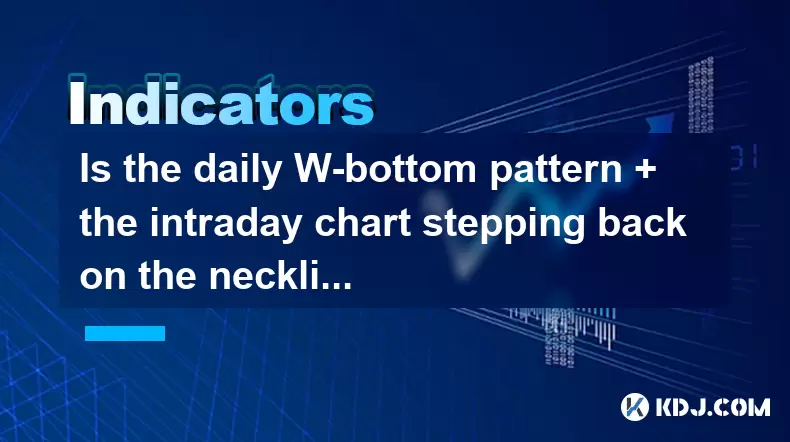
Understanding the W-Bottom Pattern in Cryptocurrency Trading
In technical analysis, the W-bottom pattern is a popular reversal chart formation that signals a potential bullish trend. It typically appears after a downtrend and consists of two distinct lows (the "W" shape) with a resistance level (neckline) connecting the two peaks. In the context of cryptocurrency trading, this pattern can be particularly powerful due to the high volatility and emotional price swings common in crypto markets.
The first low represents the initial selling pressure, followed by a retracement upwards. The second low occurs when the price revisits the prior support level but fails to break it decisively, indicating strong buyer interest at that level. Once the price breaks above the neckline with significant volume, it confirms the W-bottom pattern and often triggers a buying spree from traders anticipating further upward movement.
Interpreting the Intraday Chart Step-Back on the Neckline
After the breakout above the neckline, it's not uncommon for the price to step back or retest the neckline in intraday charts. This behavior is generally seen as a healthy consolidation phase where traders who missed the initial move may enter positions at better prices. For many technical analysts, this retest offers a second chance to go long if the support holds and the price resumes its upward trajectory.
This step-back should ideally occur on lower volume, suggesting that sellers are not aggressively pushing the price lower. If the price bounces off the neckline convincingly, it reinforces the validity of the W-bottom setup. However, if the price breaks below the neckline during this pullback, the pattern becomes invalidated, and traders should consider exiting or avoiding entry until new signals emerge.
Combining Daily and Intraday Timeframes for Precision Entry
Using both daily and intraday timeframes together allows traders to align their strategy with broader market sentiment while capturing precise entry points. The daily chart W-bottom provides the macro-level signal, while the intraday step-back gives a micro-level opportunity to enter with tighter stop-loss placement.
Here’s how to approach this combination:
- Identify a clear W-bottom structure on the daily chart, ensuring both lows are relatively equal and the neckline is well-defined.
- Monitor the intraday chart (1-hour or 4-hour) for a pullback to the neckline after the breakout.
- Look for bullish candlestick patterns like hammer, engulfing, or morning star formations during the retest to confirm buying pressure.
- Confirm the presence of support indicators such as RSI forming a bullish divergence or MACD line crossing above the signal line.
- Enter a buy position once the price shows a strong close above the intraday pullback candle or upon a successful retest of the neckline.
Managing Risk Around the Neckline Retest
Risk management is crucial when entering based on a W-bottom and intraday step-back. A well-placed stop-loss just below the second low of the W-bottom helps protect against false breakouts. Alternatively, during the intraday retest, placing the stop slightly below the neckline ensures you’re not caught off guard by a breakdown.
Position sizing should also reflect your confidence in the pattern and the overall market conditions. In highly volatile crypto markets, it's advisable to use partial entries—for example, entering half the intended position at the breakout and the remaining half during the retest—to average into the trade and reduce exposure to sudden reversals.
Moreover, monitoring volume levels during the retest is essential. A valid pullback usually sees diminishing selling pressure, reflected in declining volume bars. Increasing volume on bearish candles could indicate institutional selling or a shift in sentiment, which might invalidate the pattern.
Practical Example Using BTC/USDT Charts
Let’s walk through a practical example using the BTC/USDT pair:
- On the daily chart, Bitcoin forms a clear W-bottom over three weeks with two lows around $28,000 and a neckline at $31,500.
- The price breaks above the $31,500 level with strong volume, confirming the W-bottom.
- Over the next few days, the price steps back toward $31,500 on the 4-hour chart, offering a re-entry opportunity.
- During the pullback, a bullish engulfing candle forms near the neckline, supported by RSI rising from oversold territory.
- Traders place a buy order near $31,600, with a stop-loss set at $30,500.
- As the price moves higher, they trail the stop or take partial profits at predefined targets based on the height of the W-bottom (projected upside target = $35,000).
This scenario demonstrates how combining daily and intraday signals can yield high-probability setups in crypto trading.
Frequently Asked Questions (FAQs)
Q: Can the W-bottom pattern appear on shorter timeframes like 1-hour or 15-minute charts?
Yes, the W-bottom pattern can form on any timeframe. However, patterns on higher timeframes (like the daily chart) tend to carry more weight because they reflect broader market consensus and are less prone to noise and manipulation.
Q: How long should I wait for the price to retest the neckline after a breakout?
Typically, the retest occurs within 1–5 candlesticks after the breakout. If the price continues without looking back for an extended period, the retest might have already occurred in a previous session or the pattern may not be valid.
Q: What if the price doesn’t retrace back to the neckline after the breakout?
If the price continues upward without stepping back, it suggests strong momentum. While missing the retest means losing a low-risk entry point, traders can still participate by entering on a pullback to a moving average or Fibonacci support level.
Q: Should I always wait for the intraday step-back before buying after a W-bottom?
Not necessarily. Some traders prefer to enter on the initial breakout above the neckline, especially if volume and momentum indicators strongly support the move. Waiting for the step-back increases the probability of a valid setup but may cause you to miss early gains.
Disclaimer:info@kdj.com
The information provided is not trading advice. kdj.com does not assume any responsibility for any investments made based on the information provided in this article. Cryptocurrencies are highly volatile and it is highly recommended that you invest with caution after thorough research!
If you believe that the content used on this website infringes your copyright, please contact us immediately (info@kdj.com) and we will delete it promptly.
- BTCBULL: Riding Bitcoin's Bull Run to Crypto Glory
- 2025-07-01 20:30:11
- Bitcoin's July Jolt: Will We See a New ATH?
- 2025-07-01 20:30:11
- Bitcoin Cash Price Surges to 8-Month High: Is $1,700 Next?
- 2025-07-01 20:35:12
- Solana, Pepe Coin, Crypto Meme Mania: What's Hot and What's Not?
- 2025-07-01 19:10:12
- Bitcoin Cash Price Pump: Unpacking the Reasons Behind the Surge
- 2025-07-01 18:30:12
- Dogecoin's Wild Ride: Rally Potential Amidst Investor Panic?
- 2025-07-01 19:10:12
Related knowledge
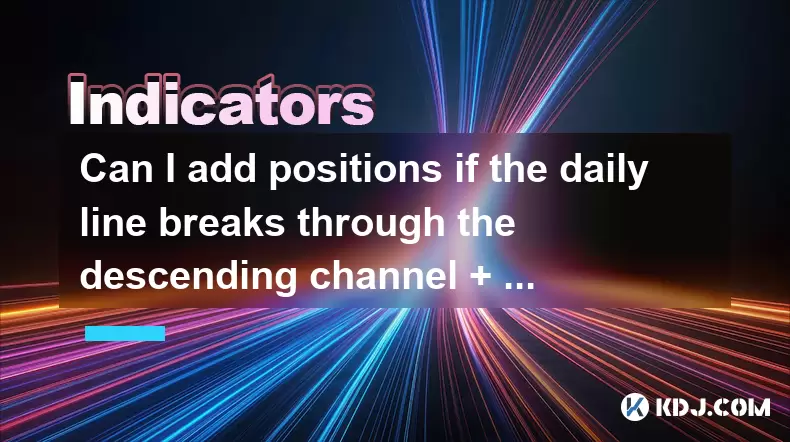
Can I add positions if the daily line breaks through the descending channel + the 30-minute moving average is in a bullish arrangement?
Jun 30,2025 at 11:00pm
Understanding the Descending Channel BreakoutWhen a daily line breaks through a descending channel, it indicates a potential shift in market sentiment from bearish to bullish. A descending channel is formed by drawing two parallel trendlines, where the upper trendline connects the lower highs and the lower trendline connects the lower lows. A breakout o...
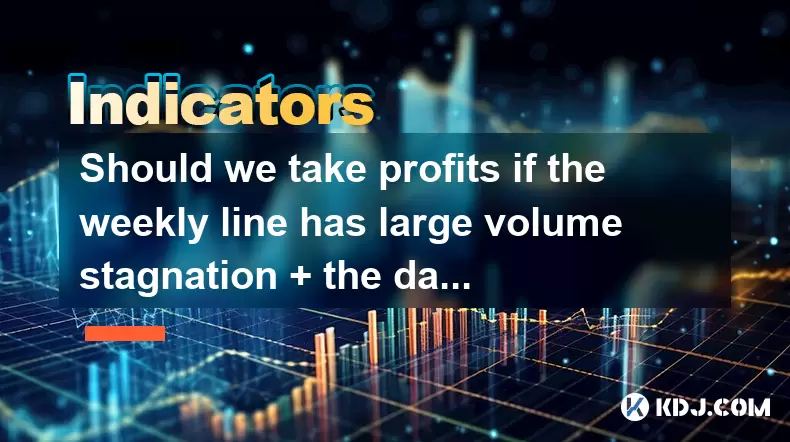
Should we take profits if the weekly line has large volume stagnation + the daily RSI top divergence?
Jul 01,2025 at 05:22pm
Understanding Weekly Volume Stagnation in Cryptocurrency TradingIn cryptocurrency trading, weekly volume stagnation refers to a situation where the total trading volume over a week remains relatively flat or shows no significant increase despite price movements. This phenomenon can indicate that institutional or large traders are not actively participat...
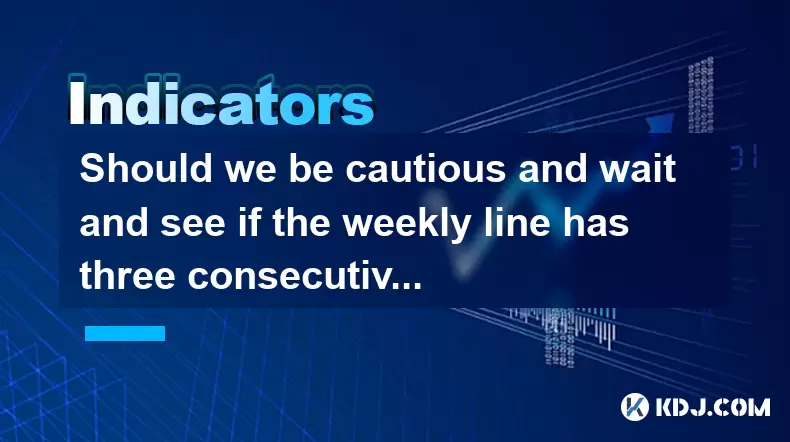
Should we be cautious and wait and see if the weekly line has three consecutive Yin lines + the daily MACD green column enlarges?
Jul 01,2025 at 12:42am
Understanding the Weekly Three Consecutive Yin Lines PatternIn technical analysis, three consecutive Yin lines on a weekly chart indicate a strong bearish trend. Each Yin line represents a week where the closing price is lower than the opening price, signaling consistent selling pressure. When this pattern appears three times in succession, it often sug...
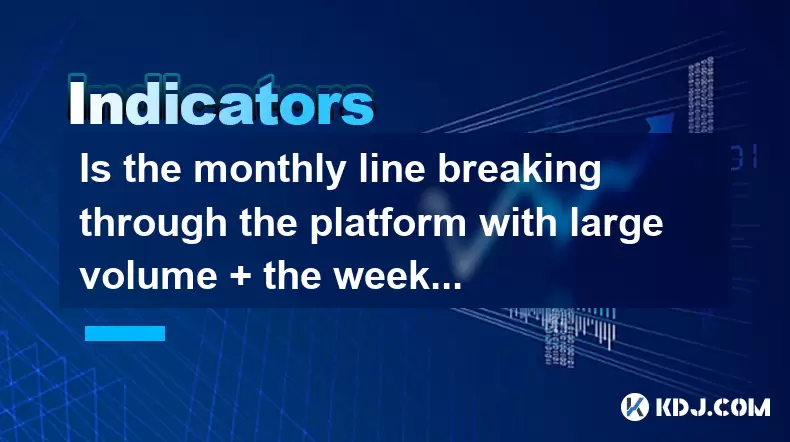
Is the monthly line breaking through the platform with large volume + the weekly moving average converging and then diverging and bullish?
Jul 01,2025 at 05:01pm
Understanding Monthly Line Breakouts in CryptocurrencyIn the world of cryptocurrency trading, monthly line breakouts are significant events that can indicate long-term trends. When a cryptocurrency's price breaks above a key platform or consolidation zone on the monthly chart, especially with large volume, it often signals strong institutional or whale ...

Is the daily W-bottom pattern + the intraday chart stepping back on the neckline a buying point?
Jul 01,2025 at 03:22pm
Understanding the W-Bottom Pattern in Cryptocurrency TradingIn technical analysis, the W-bottom pattern is a popular reversal chart formation that signals a potential bullish trend. It typically appears after a downtrend and consists of two distinct lows (the 'W' shape) with a resistance level (neckline) connecting the two peaks. In the context of crypt...
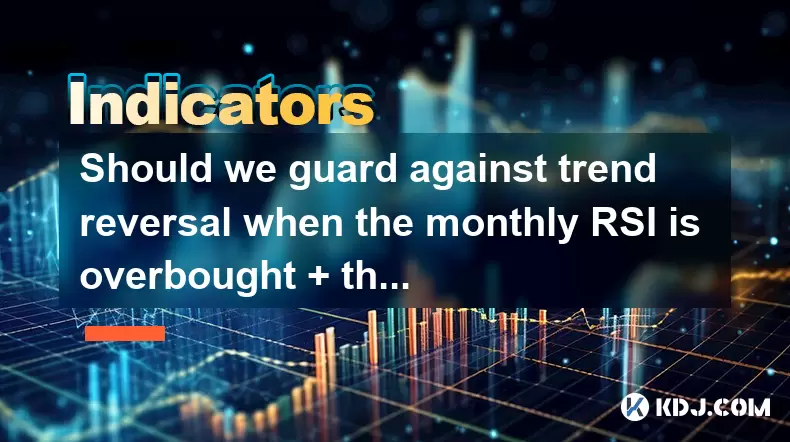
Should we guard against trend reversal when the monthly RSI is overbought + the weekly line has a long upper shadow?
Jun 30,2025 at 11:35pm
Understanding RSI Overbought Conditions in CryptocurrencyThe Relative Strength Index (RSI) is a momentum oscillator commonly used in technical analysis to identify overbought or oversold conditions in an asset. When the monthly RSI of a cryptocurrency reaches above 70, it is generally considered overbought, suggesting that the asset may be due for a pul...

Can I add positions if the daily line breaks through the descending channel + the 30-minute moving average is in a bullish arrangement?
Jun 30,2025 at 11:00pm
Understanding the Descending Channel BreakoutWhen a daily line breaks through a descending channel, it indicates a potential shift in market sentiment from bearish to bullish. A descending channel is formed by drawing two parallel trendlines, where the upper trendline connects the lower highs and the lower trendline connects the lower lows. A breakout o...

Should we take profits if the weekly line has large volume stagnation + the daily RSI top divergence?
Jul 01,2025 at 05:22pm
Understanding Weekly Volume Stagnation in Cryptocurrency TradingIn cryptocurrency trading, weekly volume stagnation refers to a situation where the total trading volume over a week remains relatively flat or shows no significant increase despite price movements. This phenomenon can indicate that institutional or large traders are not actively participat...

Should we be cautious and wait and see if the weekly line has three consecutive Yin lines + the daily MACD green column enlarges?
Jul 01,2025 at 12:42am
Understanding the Weekly Three Consecutive Yin Lines PatternIn technical analysis, three consecutive Yin lines on a weekly chart indicate a strong bearish trend. Each Yin line represents a week where the closing price is lower than the opening price, signaling consistent selling pressure. When this pattern appears three times in succession, it often sug...

Is the monthly line breaking through the platform with large volume + the weekly moving average converging and then diverging and bullish?
Jul 01,2025 at 05:01pm
Understanding Monthly Line Breakouts in CryptocurrencyIn the world of cryptocurrency trading, monthly line breakouts are significant events that can indicate long-term trends. When a cryptocurrency's price breaks above a key platform or consolidation zone on the monthly chart, especially with large volume, it often signals strong institutional or whale ...

Is the daily W-bottom pattern + the intraday chart stepping back on the neckline a buying point?
Jul 01,2025 at 03:22pm
Understanding the W-Bottom Pattern in Cryptocurrency TradingIn technical analysis, the W-bottom pattern is a popular reversal chart formation that signals a potential bullish trend. It typically appears after a downtrend and consists of two distinct lows (the 'W' shape) with a resistance level (neckline) connecting the two peaks. In the context of crypt...

Should we guard against trend reversal when the monthly RSI is overbought + the weekly line has a long upper shadow?
Jun 30,2025 at 11:35pm
Understanding RSI Overbought Conditions in CryptocurrencyThe Relative Strength Index (RSI) is a momentum oscillator commonly used in technical analysis to identify overbought or oversold conditions in an asset. When the monthly RSI of a cryptocurrency reaches above 70, it is generally considered overbought, suggesting that the asset may be due for a pul...
See all articles

























































































